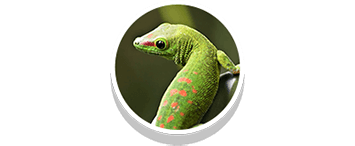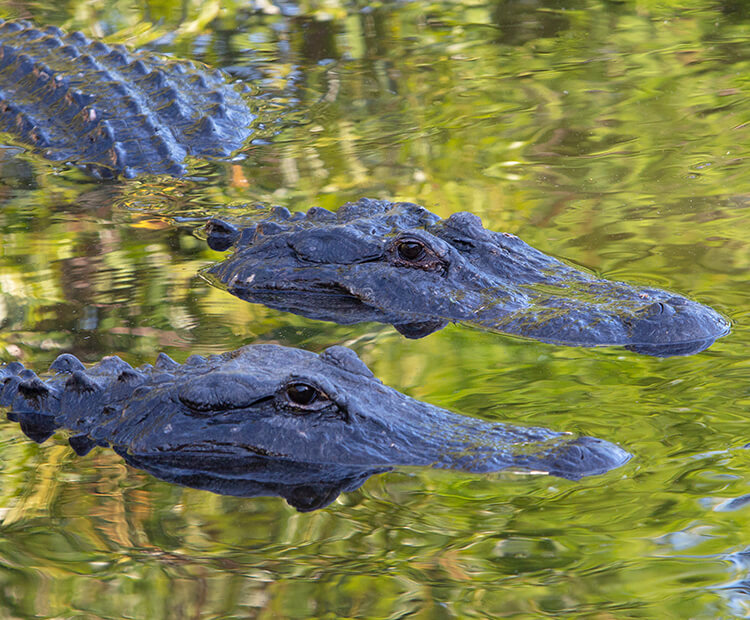
American alligator

Reptiles


Stable
facts

American alligators never stop growing, so very old gators can be even bigger—more than 14 feet long. They are the largest reptiles in North America.

Alligator diets include fish, frogs, turtles, snakes, and mammals. Young alligators eat insects, snails, and fish. As an alligator gets bigger, its prey get bigger, too. Adult alligators can go a long time between meals. They store fat in their tail.

Alligators live in fresh water. You can find them in streams, swamps, marshes, ponds, and lakes.
description

Babies on the way
An alligator mom pushes soil and decaying leaves into a large mound. She lays her eggs in the mound. Then, she settles in nearby to guard the eggs from predators that might try to dig them up and eat them. When the babies are ready to hatch, they make grunting noises from inside the egg. A tiny point on the tip of the snout, called an “egg tooth,” helps an alligator hatchling break out of its leathery shell.

Croc or gator?
You can tell the difference by looking at its toothy grin. When an alligator closes its mouth, its large fourth tooth fits neatly inside its upper jaw. When a crocodile closes its mouth, that fourth tooth juts up on the outside of the jaws.

Success story
Hunters used to trap American alligators for their skin and meat—but they hunted too many. At one point, there were only about 200 American alligators left, and they were listed as an Endangered Species. With this protection, they made an amazing recovery. Today, hunting wild American alligators is tightly regulated, and alligator meat and hides come from alligator farms.














